Fact Check- Muslim shepherd did not discover Amarnath cave, the lie that is often peddled in grab of some ‘Ganga-Jamuni Tehjeeb’
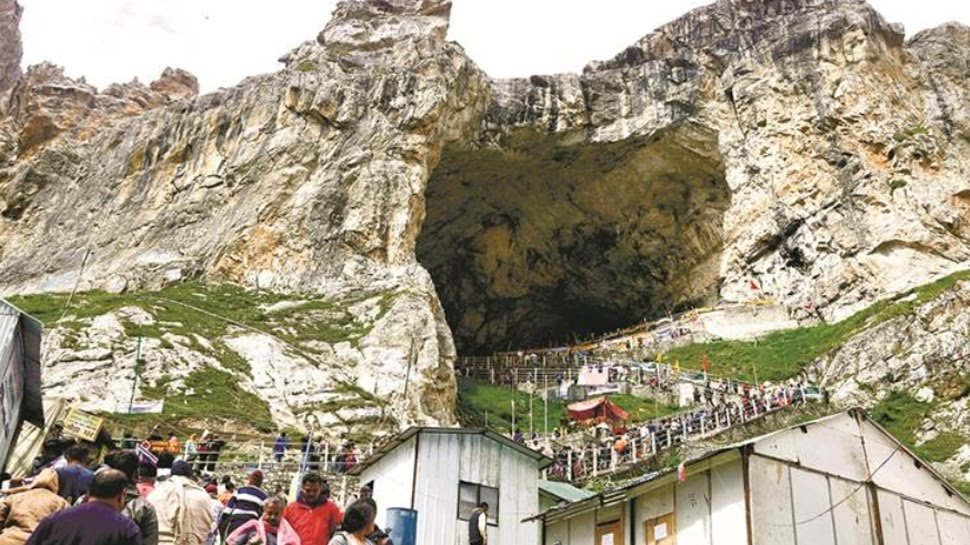

The famous writer Mark had once said that – “By the time the truth ties its shoelaces, the lie has traveled halfway around the world”. That is, the speed of lies is so fast that the truth is always left behind somewhere. So far behind that the world starts believing this truth to be a lie again. How many times this has happened in the history of our country. Think for yourself, is the history that you have been reading for decades, is it completely correct? Was it not mixed? In this context, let me tell you the truth from which people have been kept away till now. This truth is associated with the Amarnath cave, one of the main religious places of Lord Shiva. It has been repeated many times by historians and a certain section of our country that the Amarnath cave was discovered in the year 1850 by a Muslim shepherd, whose name was Buta Malik, this is a false story. Everything that is being told to you on the discovery of Baba Barfani in Amarnath for centuries is a lie.
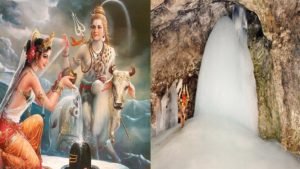
A false story is often peddled for how the Amarnath cave was discovered. It is said that this person named Buta Malik was grazing his sheep and goats one day. During that time this person met a monk. The sadhu presented Buta Malik with a bag full of coal and asked him to leave. When the person reached home and opened the bag, he had gold coins instead of coal. Seeing this the Muslim shepherd was shocked. He could not believe that the monk gave him a bag full of coal which turned into gold coins. It was a miracle for him. So he came to thank this monk in his cave. But it is said that he did not find a monk in this cave. But when this person entered inside the cave, there the white Shivling made of snow was shining like gold. He returned and told this to the people of the village and in this way it is claimed that the Amarnath cave was discovered in 1850.

This story establishes that the Amarnath cave and Baba Barfani, the center of Hindu faith, was discovered by a Muslim shepherd. And therefore Hindus should consider this Muslim shepherd a favor. This is the truth related to the Amarnath cave, which has been told to us and you for decades. This incident has also been recognized by many historians of our country. But is this truth of Amarnath cave the real truth? It is not so that Buta Malik had discovered the Amarnath cave, so we are going to give you this unheard and very valuable information about the Amarnath cave. Amarnath cave is in Anantnag district of Jammu and Kashmir. The length of this cave is 19 meters and the width is 16 meters. It is believed that here Lord Shiva narrated the story of immortality to Goddess Parvati. Therefore it is believed that Lord Shiva resides in this cave.
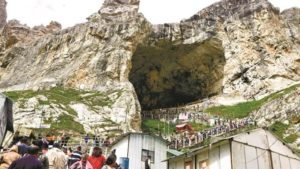
The Parvati Peeth located in this cave is one of the 51 Shaktipeeths, which are believed to have fallen in the throat of Bhagwati Sati. According to mythology, the first stop of the path that Lord Shiva took to reach this cave was Pahalgam. He had earlier left his vehicle i.e. Nandi at this place. Hence this place was called Pahalgam. This place is about 90 KM away from Srinagar. After Pahalgam, the second route on the way to this cave comes Chandanbari. It is believed that Lord Shiva abandoned the moon from his head here. Then the moon waited for Lord Shiva to return, hence this place was called Chandanbari. A little ahead of Chandanbadi is the flea top.
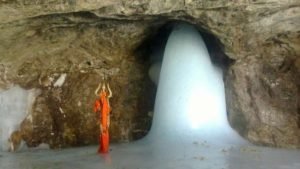
It is said that there was a big fight between the gods and the demons for the vision of Amarnath. At that time with the help of Lord Shiva the Devas had defeated the demons and a mountain was formed from the dead bodies of the demons. And it is said that since then this place is known as Flea Top. After the flea top, the next place comes Sheshnag.. Lord Shiva removed the snake from his neck and kept it here. There is also a lake of blue water, which proves that it is the place of Sheshnag. After Sheshnag there are places like Mahagun Mountain or Mahagunas Parvat and Panchtarni. It is believed that Lord Shiva had sacrificed five Panchabhattas here. That is, earth, water, air, sky and fire were sacrificed. Hence this place is called Panchtarni. And after this comes the Amarnath cave. Where Shivling is made from ice.

In the year 2020 and 2021, due to Covid, Amarnath Yatra had been cancelled. But this place has always been visited by lakhs of Hindu devotees. In the years 2011 and 2012, more than 6 lakh pilgrims had visited the Amarnath cave. However, in the year 2018, this figure was slightly less than 3 lakhs. But this year the number of devotees is estimated to be up to eight lakhs. So as it has been shown and spread so far whether the Amarnath cave was discovered by a Muslim shepherd, then this thing is completely wrong.

The Linga Purana was written in the fifth century. That is, the story that is told about Buta Malik, this Purana is more than 1400 years old. There is 12th chapter on its page number 487, in which the 151st verse is very important. The meaning of Amareshwar written in this verse is Baba Barfani, who is seated in Amarnath. Who is also known as Amareshwar. That is, Amarnath is mentioned in the Linga Purana written in the fifth century. Then think where did this story of Buta Malik come from?
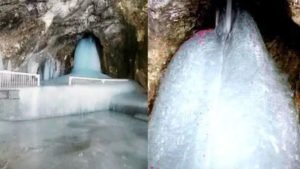
In the 12th century, a treatise was composed by Kalhana, the ancient historian of Kashmir, which is popularly known as Rajat-Rangini. The 267th verse on its page number 280 is related to the Amarnath cave. You can also watch this shloka on your TV screen. Apart from this, I have also brought a copy of it with me. It has been told in this verse that a head was constructed on a distant mountain like a sea of milk. The public still sees him in the Amareshwar Yatra. Think of the Amarnath cave which is claimed to have been discovered in the year 1850 and it is said that Amarnath Yatra started only after 1850, that Amarnath Yatra has also been mentioned in the book written in the 12th century. However, this evidence does not end here.
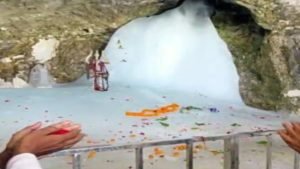
Ain-e-Akbari was composed in the 16th century by Abul Fazl, one of the Navaratnas of the Mughal emperor Akbar. On page number 360 of its second section, it is written that there is an ice figure in a cave, which is called Amarnath. This is a holy place and at the time of full moon, a figure is formed from the snow droplets, which people consider to be the figure of Mahadev and after the new moon it starts melting slowly. Think. In the 16th century, one of Akbar’s Navaratnas, Abul Fazl, also mentioned the Amarnath cave in his composition. Apart from this, in the 17th century itself, the famous French physician François Bernier also mentions the Amarnath cave in his book. He was the doctor of the Mughal rulers who lived in India for about 12 years in the 17th century. During this he traveled to Kashmir with the Mughal ruler Aurangzeb and also experienced the Amarnath cave. He has mentioned this in his book Travels In The Mogul Empire.
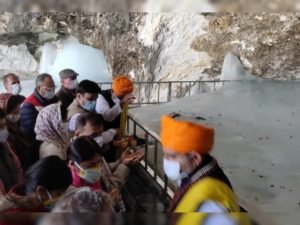
The famous British explorer Godfrey Thomas Vigne also visited India. He had traveled to Kashmir from 1835 to 1838. In one of his books written in 1842, he had mentioned the experience related to this journey. This book is written in two parts. Pahalgam and Amarnath cave are mentioned on the first part i.e. page number 148 of the first section, while on page number 7 and 8 of the second part of this book, it has been described to reach the Amarnath cave via Pahalgam. In this, he tells that on the 15th day of the month of Sawan, worship is being done in the cave of Amarnath and in this worship devotees are coming from every corner of India. This book was written in 1842. That is, eight years before the so-called discovery of Buta Malik. But despite this, the historians of our country spread this lie so much that the Amarnath cave was discovered by a Muslim shepherd and before that no one knew about it. You will be more surprised to know here that the descendants of Buta Malik guarded the Amarnath cave for many decades and the descendants of Buta Malik used to get one-third of the offerings made by the devotees here. This cycle continued till the year 2000. But after this the then Vajpayee government formed the Amarnath Shrine Board and the share of donations received by the descendants of Buta Malik was stopped. Imagine Buta Malik’s descendants kept taking money from charity for decades on the basis of the claim that Buta Malik had discovered the Amarnath cave. Whereas the truth is that Amarnath cave has been mentioned in our Puranas only. But after this the then Vajpayee government formed the Amarnath Shrine Board and the share of donations received by the descendants of Buta Malik was stopped. Imagine Buta Malik’s descendants kept taking money from charity for decades on the basis of the claim that Buta Malik had discovered the Amarnath cave. Whereas the truth is that Amarnath cave has been mentioned in our Puranas only. But after this the then Vajpayee government formed the Amarnath Shrine Board and the share of donations received by the descendants of Buta Malik was stopped. Imagine Buta Malik’s descendants kept taking money from charity for decades on the basis of the claim that Buta Malik had discovered the Amarnath cave. Whereas the truth is that Amarnath cave has been mentioned in our Puranas only.
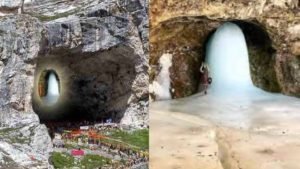
The thing we want to tell you today is that only people who are powerful write history. And history is written by Rulers i.e. rulers, who rule a large population with their power. Between 1526 and 1857, when India was ruled by the Mughals, this history was written by the court historians of the Mughals. And in this the Mughal rulers were presented as the heroes of India. Akbar was called Akbar the Great and the atrocities committed by the Mughals on the Hindus and the hundreds of temples that were demolished and the mosques built, their reality was also written by the Mughals in the history. In simple words, with the truth of the Amarnath cave, such social engineering took place in our country, under which it was told that Hindu devotees should be considered as a favor to the Muslim shepherd who discovered the Amarnath cave. Whereas the truth is that the reality of the Amarnath cave, its history, its splendor and its identity is centuries old.
DISCLAIMER: The author is solely responsible for the views expressed in this article. The author carries the responsibility for citing and/or licensing of images utilized within the text.
